The Isle of Gorée
On our approach to Dakar, we passed the Isle of Gorée, a site of profound historical significance. Once a hub during the transatlantic slave trade, it served as a collection point for the exportation of enslaved individuals.
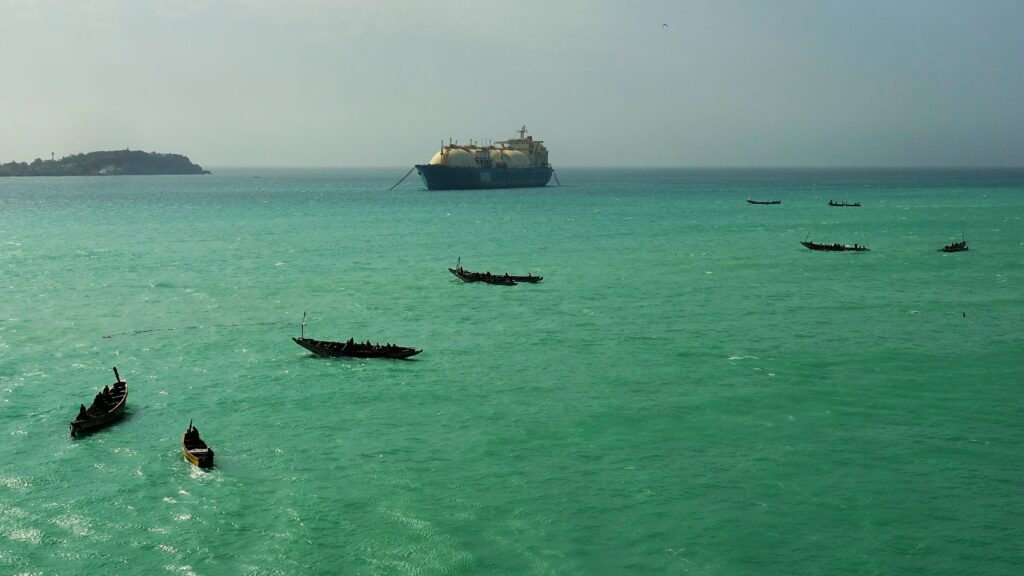
There were several fishing boats in the bay. One seemed to drive at our ship, as if to say ‘We were here first.’
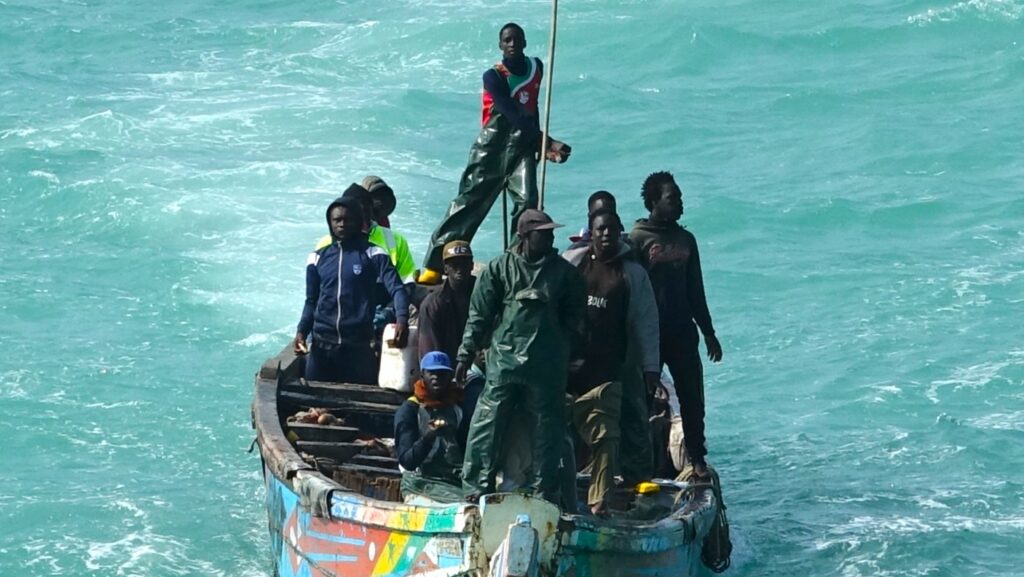
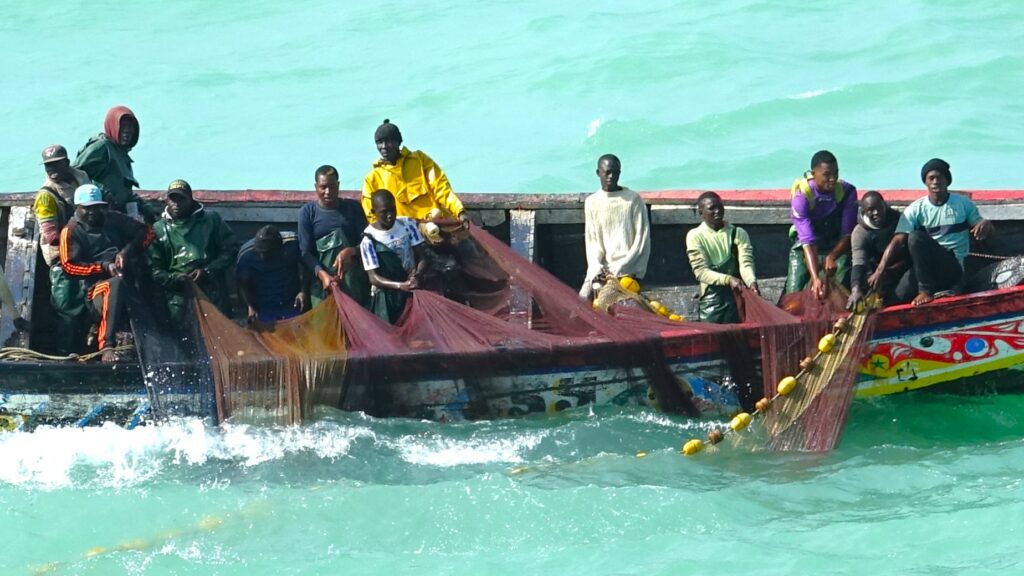
Later in the day an announcement on the ship confirmed that two fishermen that had fallen into the sea were safe and unharmed.
I hadn’t been aware that anyone was in the sea at the time, but on reviewing my photos, the one below shows a man in the sea.
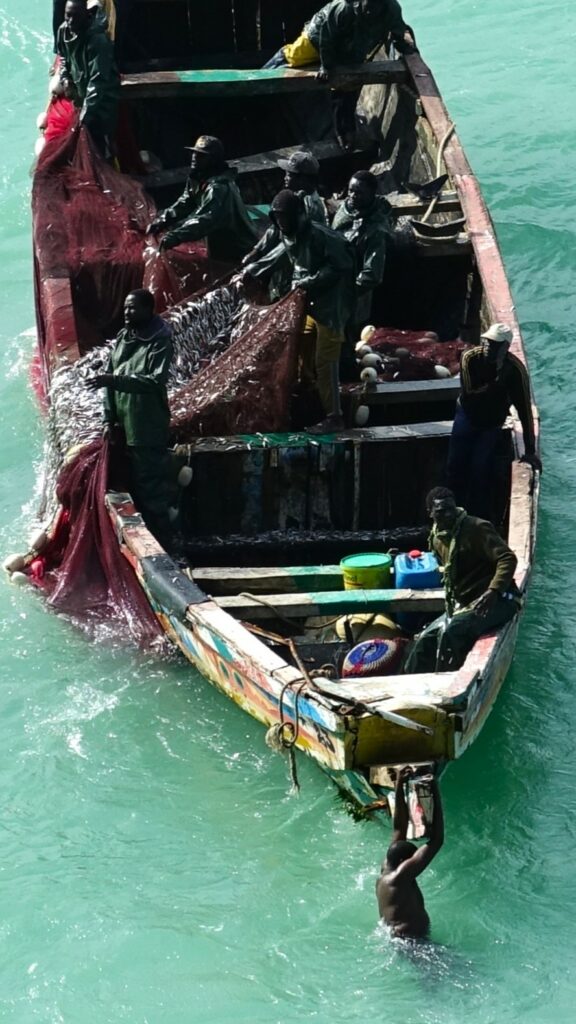
I’m not sure what went on, but I find it strange that he is not wearing a jacket, like his colleagues, and none of his colleagues seem to be rushing to assist him. A photo several minutes later shows him still hanging on to the bow. This suggests to me that his entry into the sea was intentional, perhaps a form of protest.

In the harbour there was a large flock of yellow-billed kite, swooping and diving. We saw lots more as we travelled through Senegal. They are very common there.
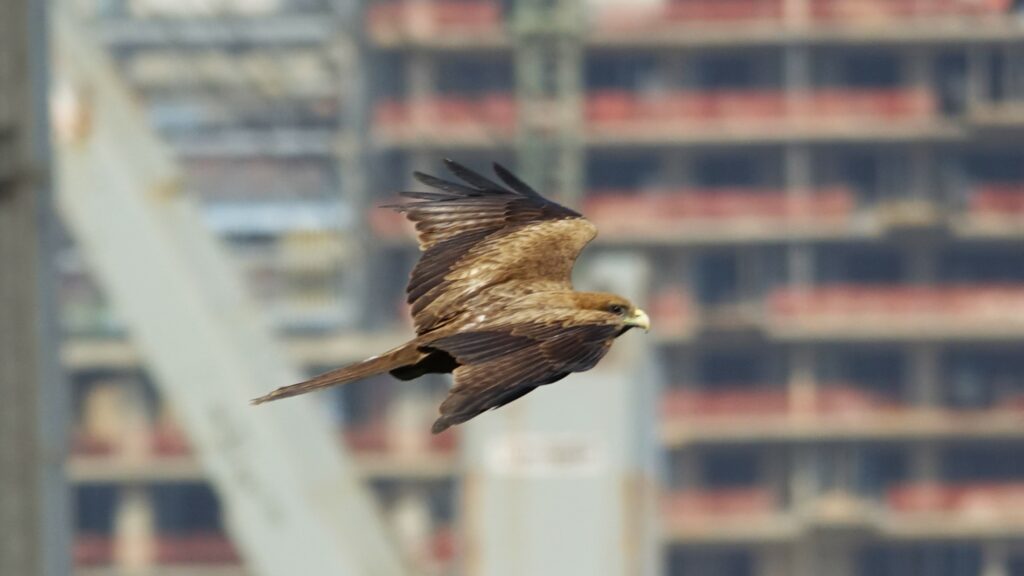
At the dockside we boarded a coach and started our journey to Lake Retba. We had a motorcycle police escort leading us through the traffic with blue flashing light and syren sounding constantly. Dakar is a heavily congested city.
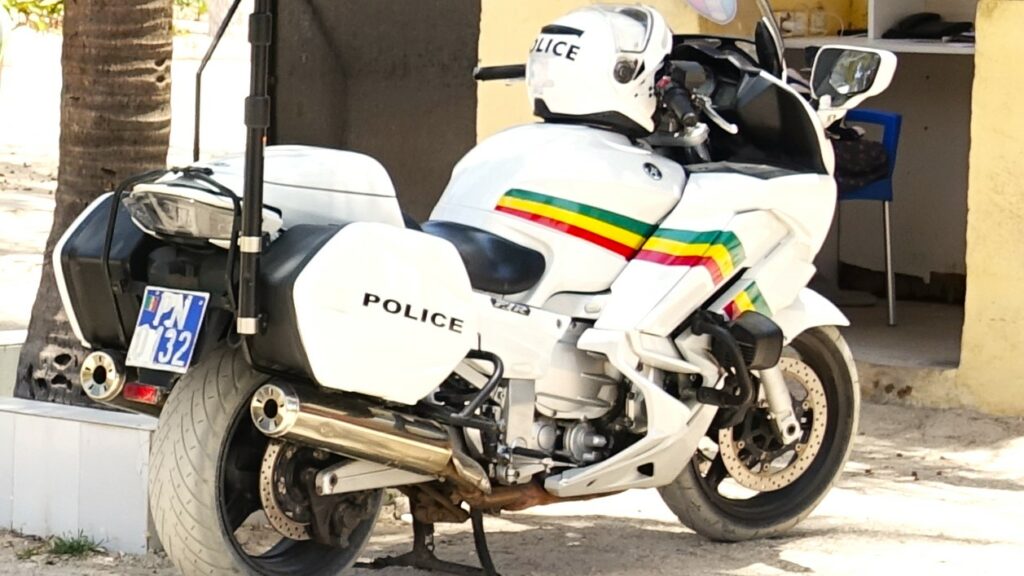
On route, we visited a market. It was stacked high with quality vegetables.
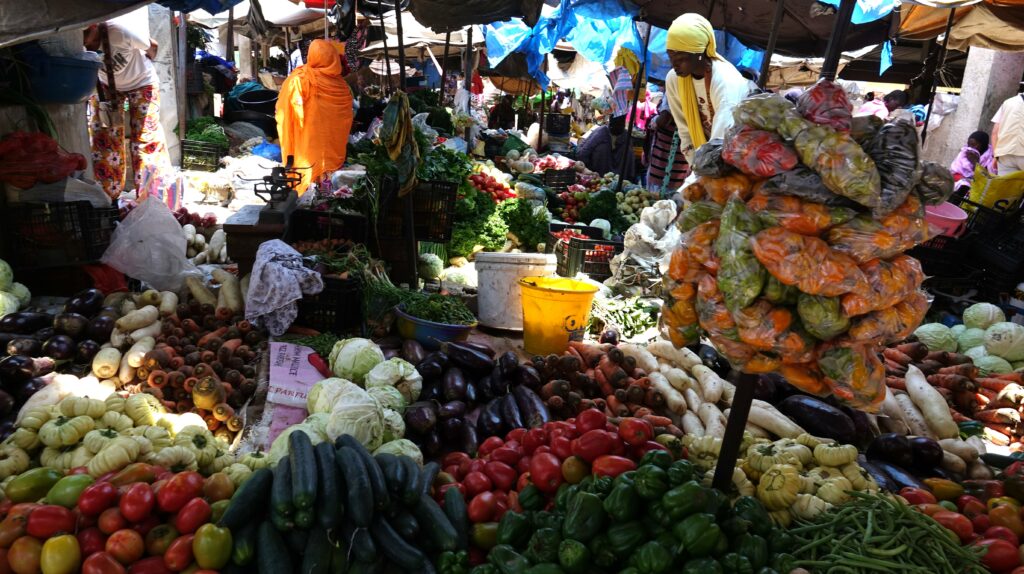
All around women were carrying items on their heads. The one below was talking and appeared to have forgotten it was there.
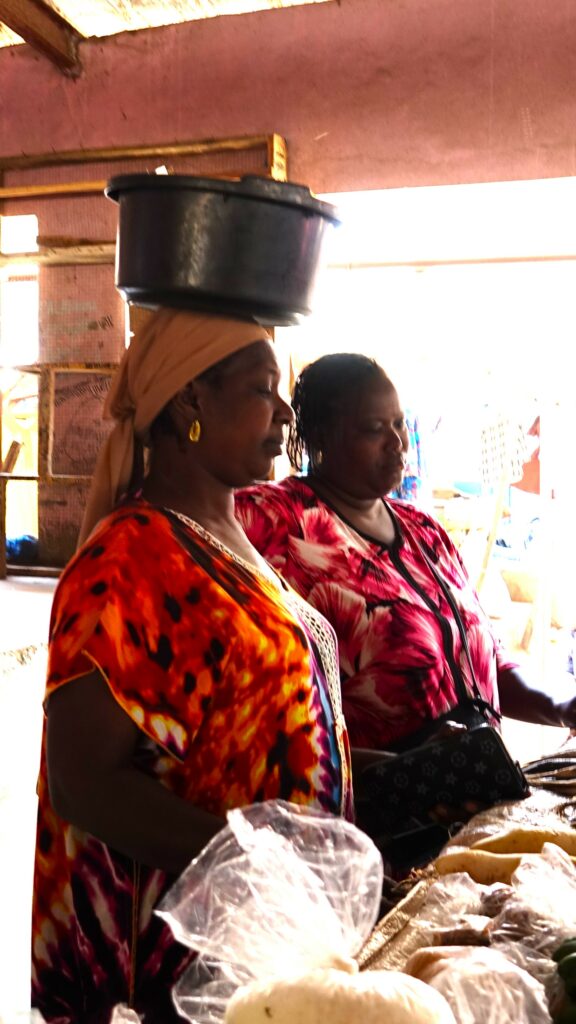
The ‘fresh’ fish section didn’t seem quite so inviting and I began to wonder where our lunch would be purchased.

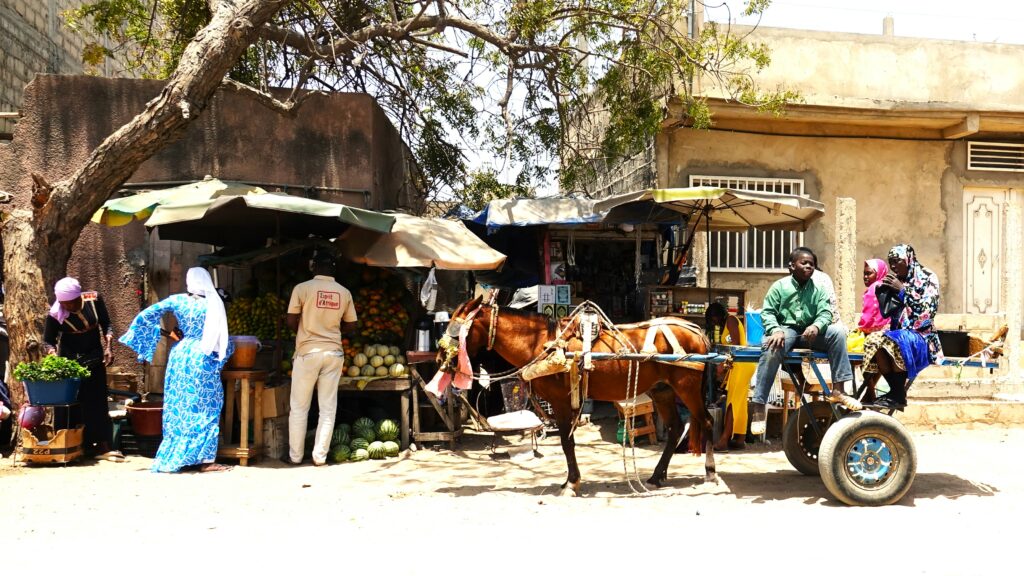
Carts being pulled by horses or mules were frequent sights as we passed through the towns and villages, they were often more common than motor vehicles.
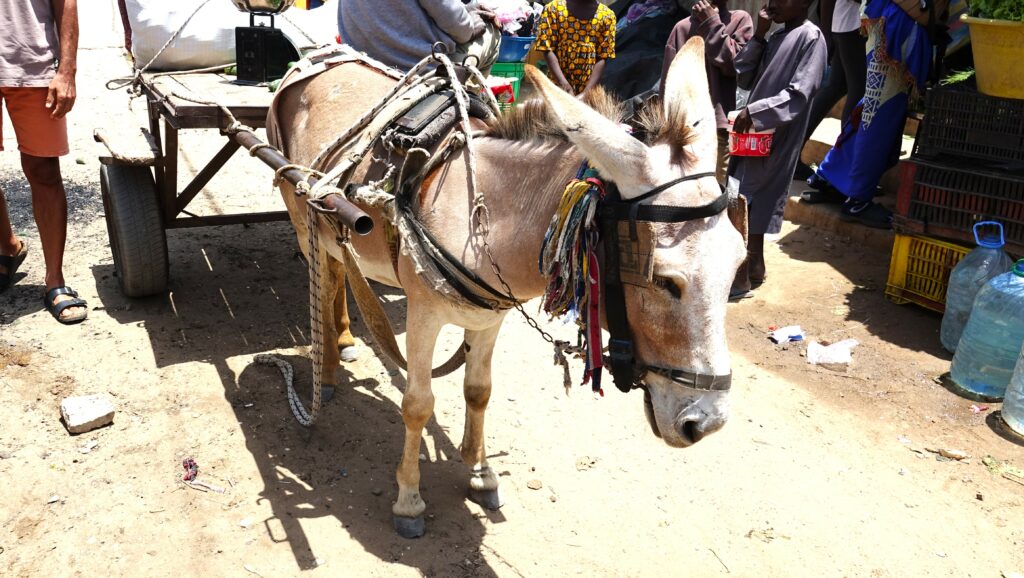
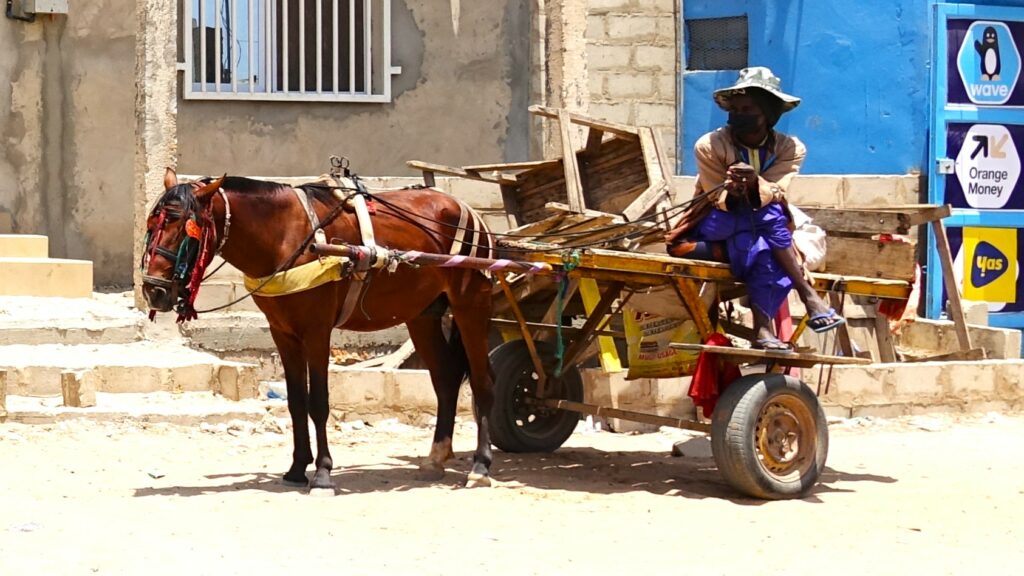
We arrived at an hotel adjacent to the lake and transferred into some very old Land Rovers with ‘modified’ seating and roll bars added.
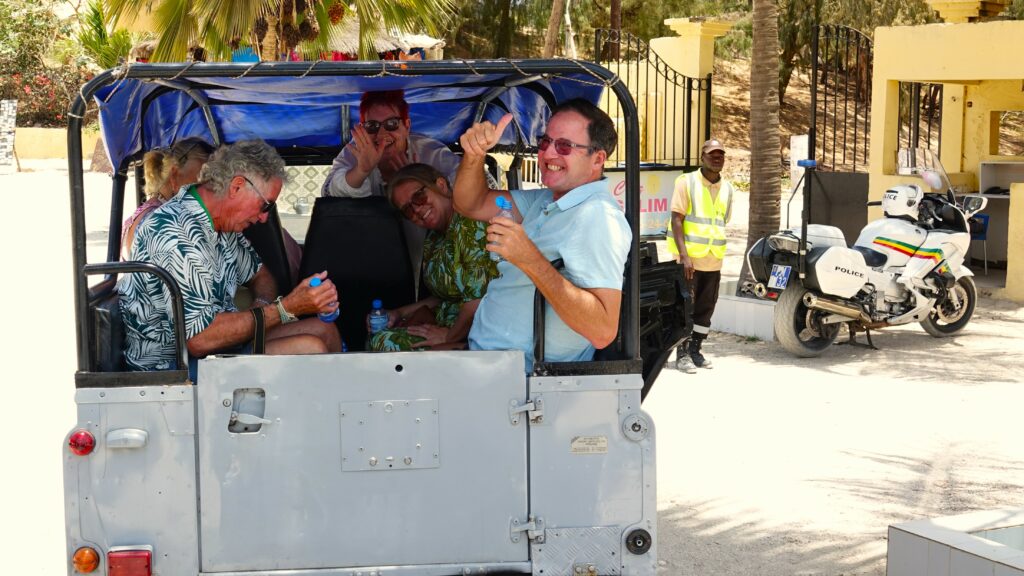
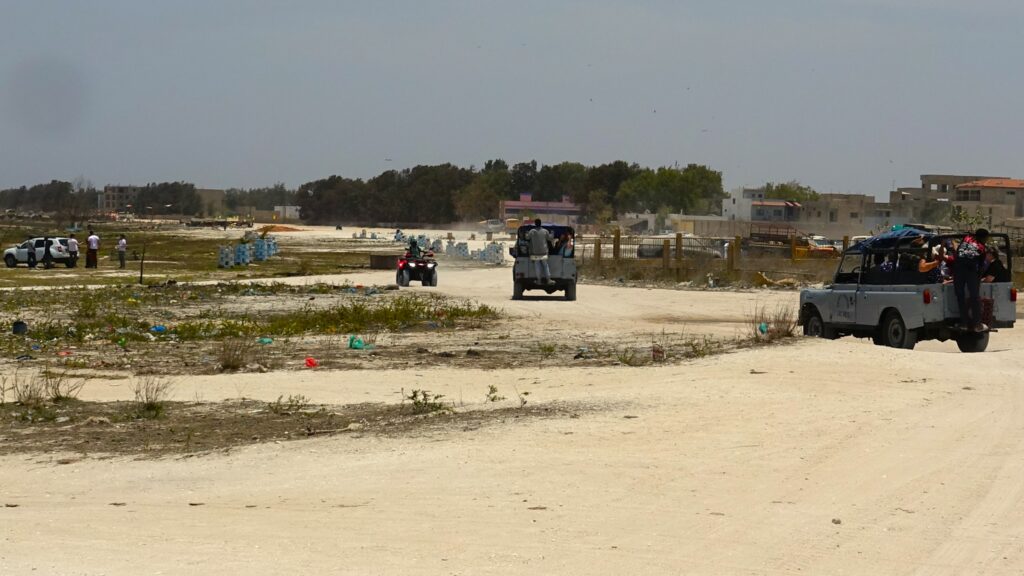
The area we first entered was where the finishing point for the Paris/Dakar rally had been located, prior to it being moved to South America.
We drove along the banks of Lake Retba which is locally known as ‘Lac Rose’ or Pink Lake.

I think the area is now used for the hosting other off-road vehicle events and we passed what appeared to be entertainment centres used on those occasions.

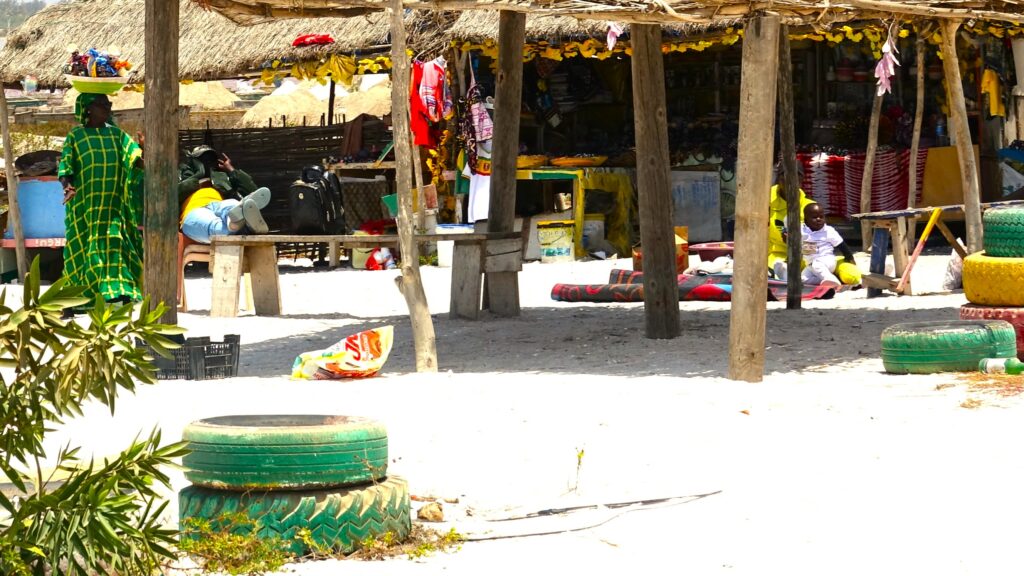
The lake has a very high salt content and it’s pink colour is caused by an algae that thrives in hypersaline water.
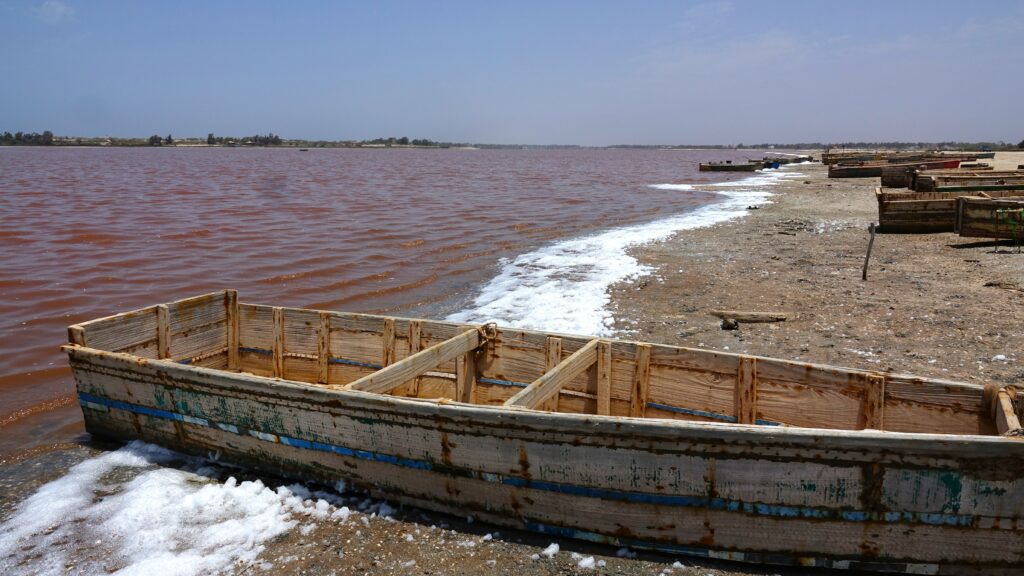
We were in convoy with three other similar vehicles but our driver suddenly signalled to the others that he was taking a detour. The reason came clear when he pulled up at the local version of ‘Kwik-Fit’ and the ten year-old attendant rushed out with an airline to add some air to our rear offside.
We then took off at speed to catch up with the others.
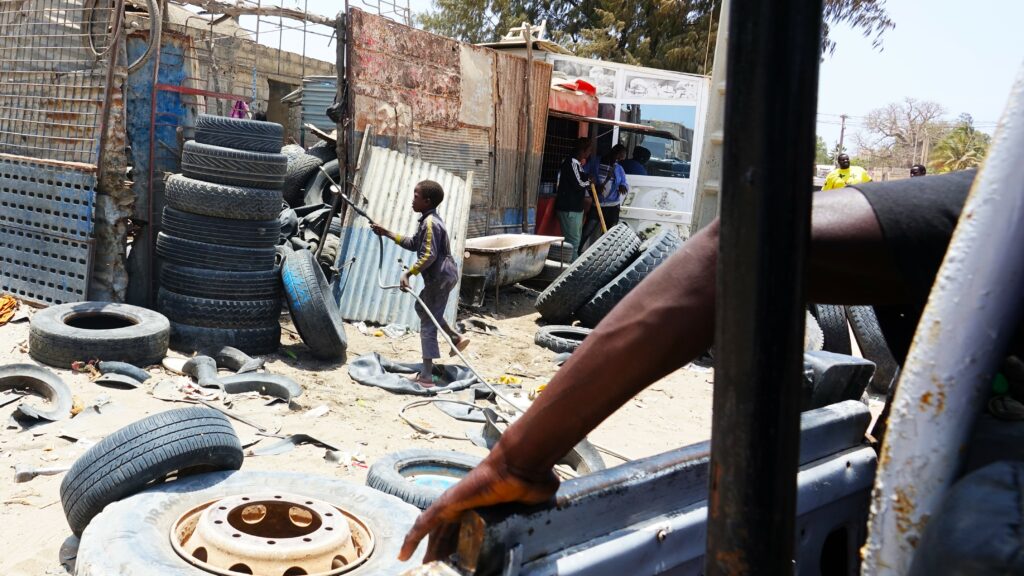
At this point I wondered if I should have taken a camel instead?
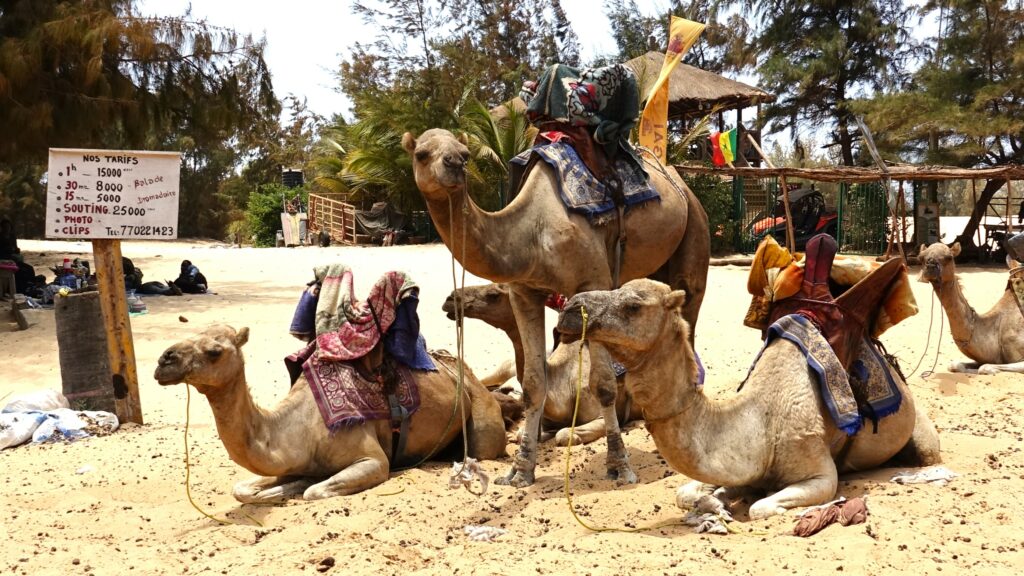
Each vehicle had an additional attendant riding at the back, whose role I can only speculate about. However, as these vintage vehicles began to tackle the challenges of sand dunes and rugged tracks, it’s possible they served as a support team, ready to lend a hand in keeping the vehicles operational under such demanding conditions
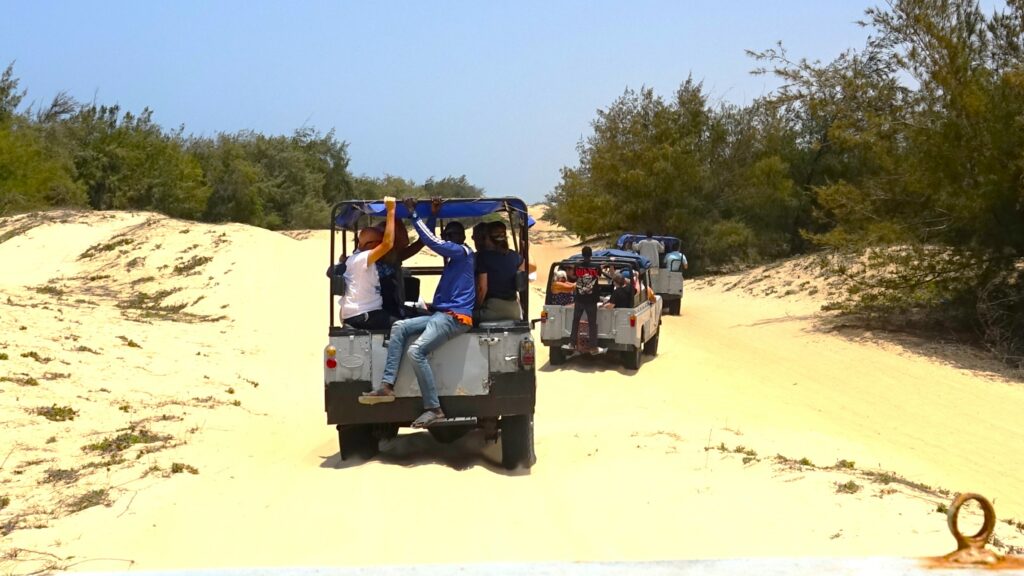
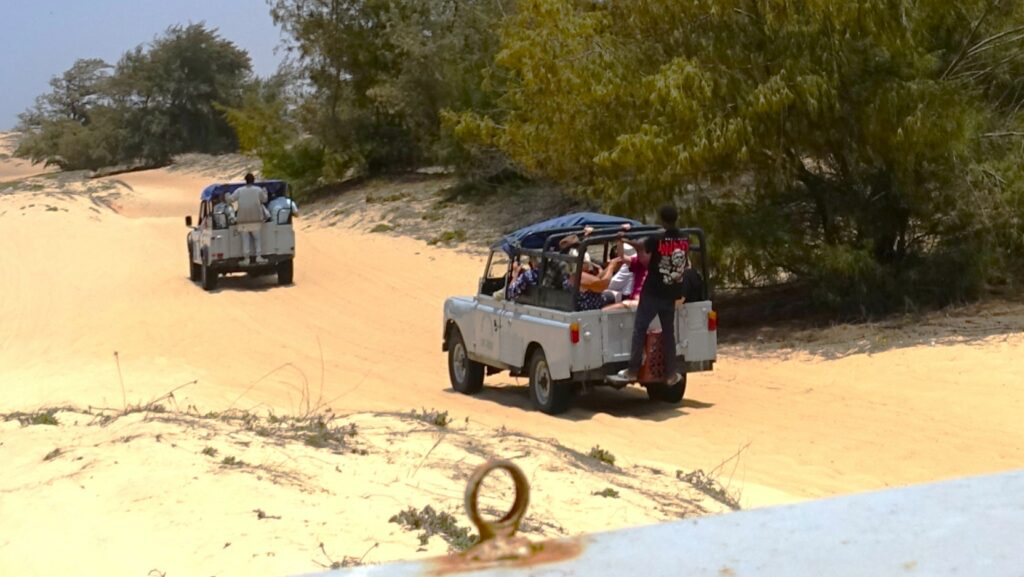
The driving was hard and fast.
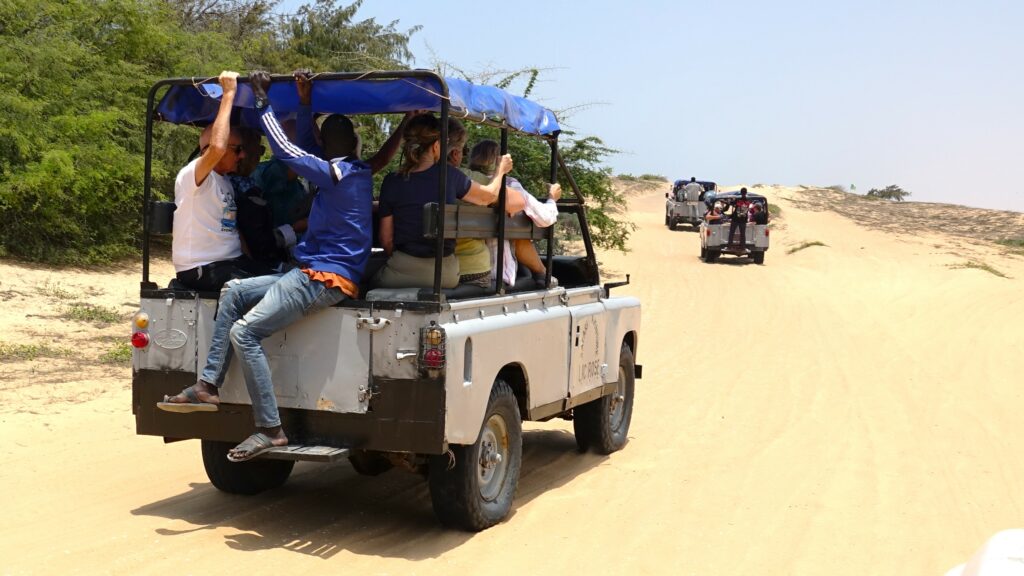
At one point the vehicle in front of us stopped and the attendant spoke to our driver who then passed him a wheel brace from the door pocket.
He then used the brace to check that the wheel nuts on the rear right wheel were tight. It was good to see that the team were making safety their primary concern especially, as I noticed, that two wheel nuts were missing from that wheel anyway.
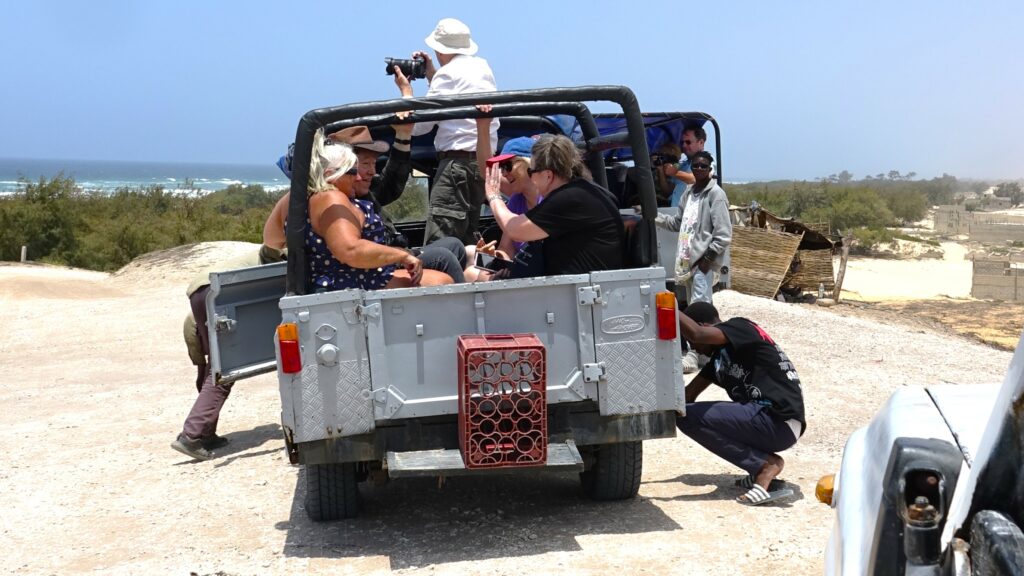
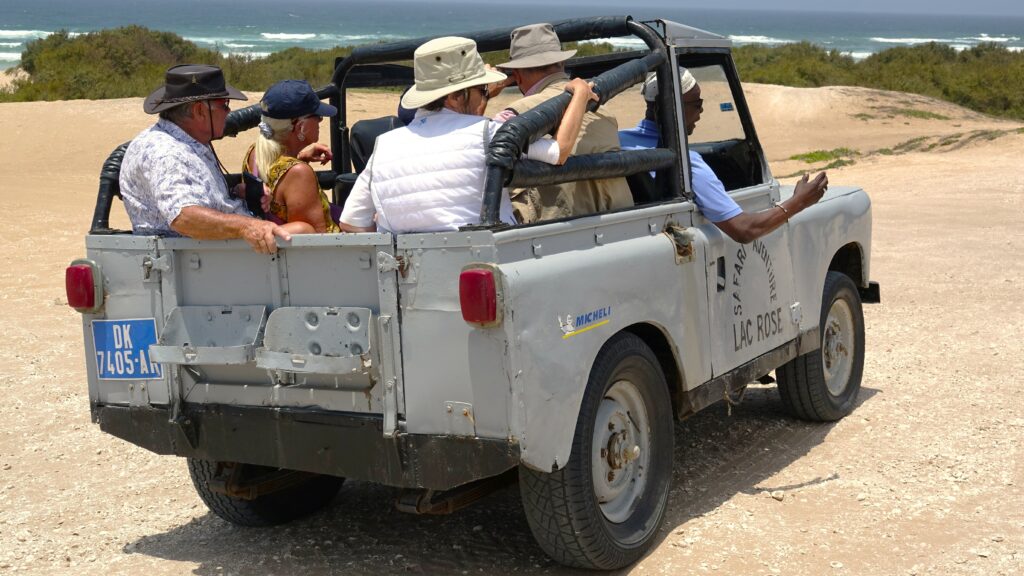
Later I looked at the wheels on the other vehicles and came to the conclusion that Land Rover wheel nuts are in short supply in Senegal!
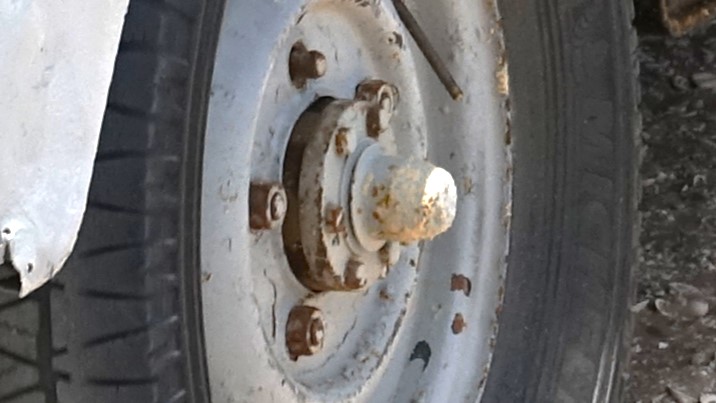
Eventually, with all wheels still attached, we came to a village.
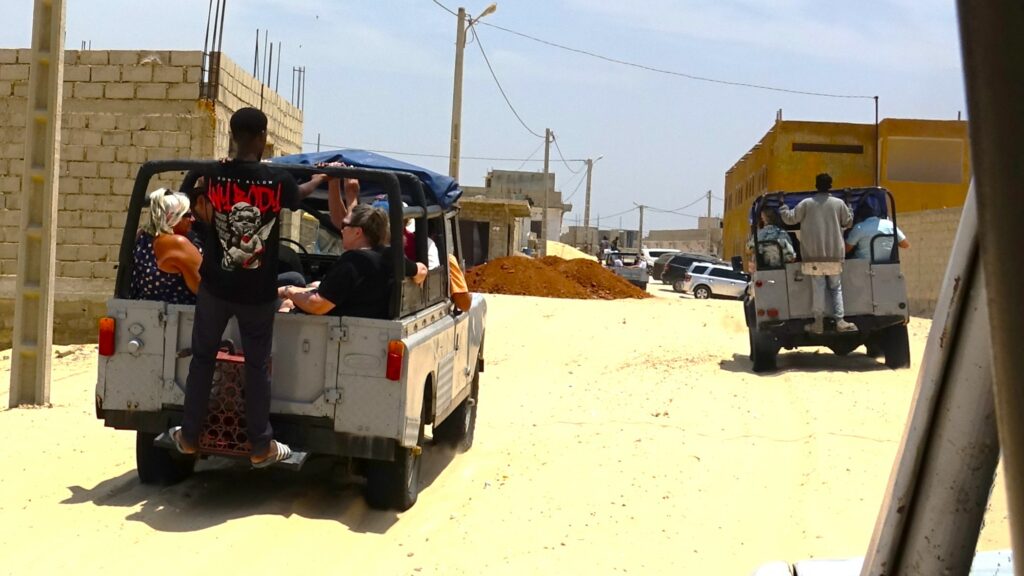
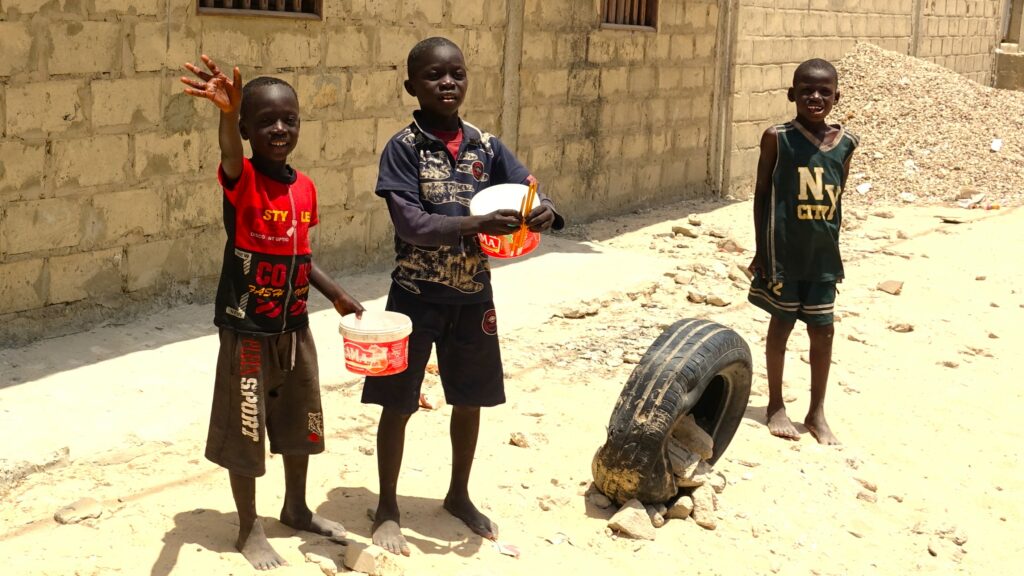
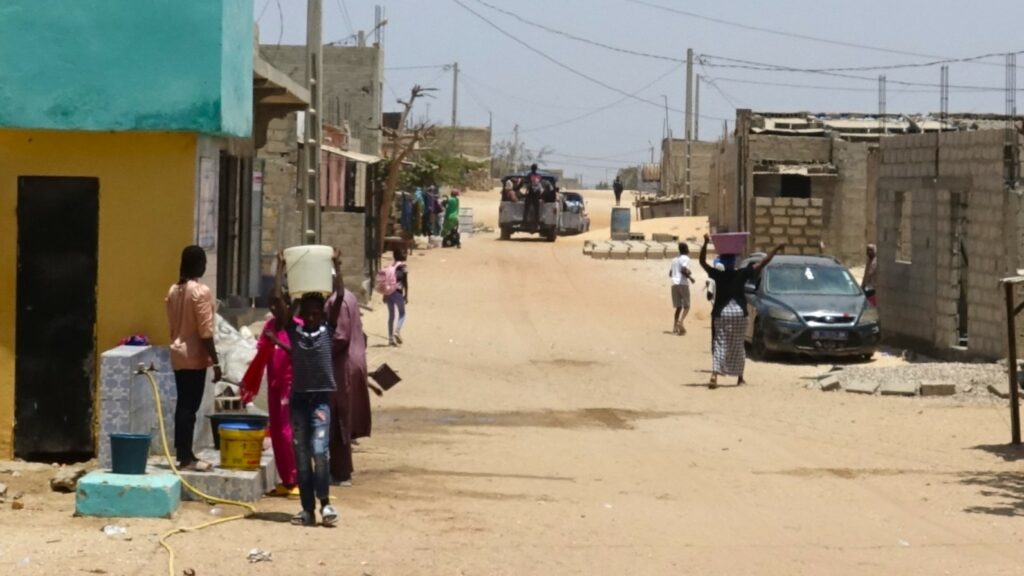
A small crowd, mostly children, gathered as we were introduced to the village chief.
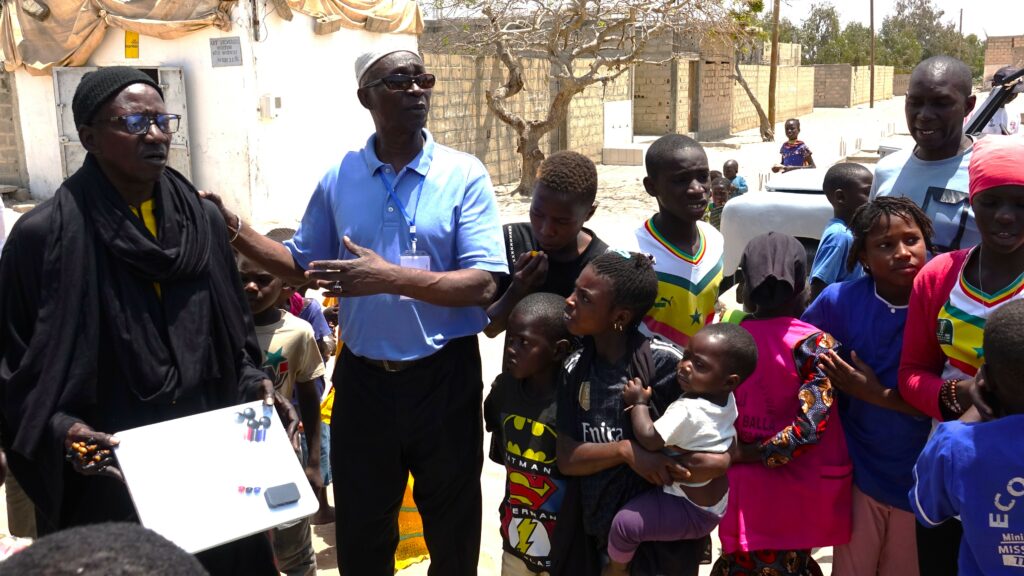
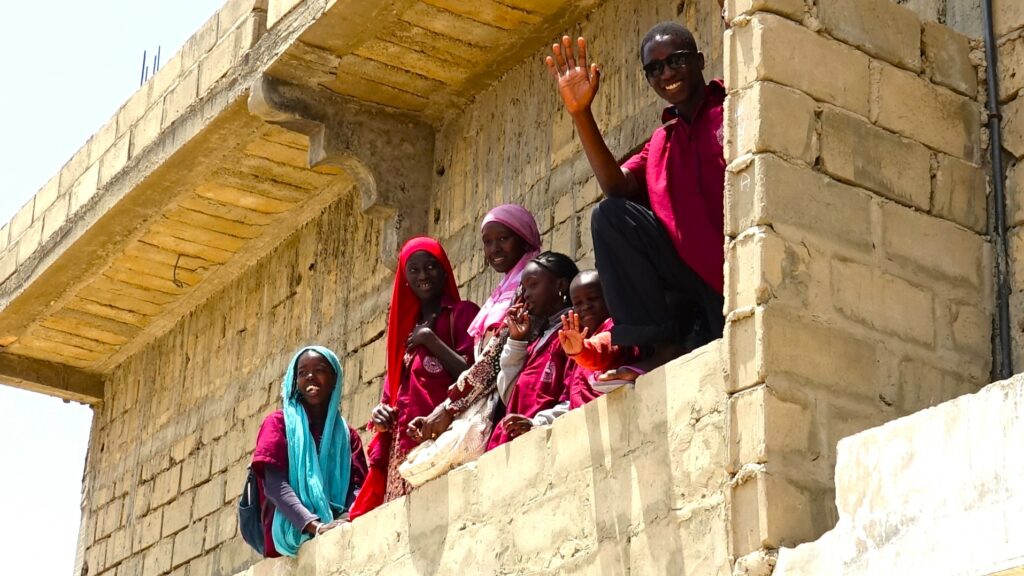
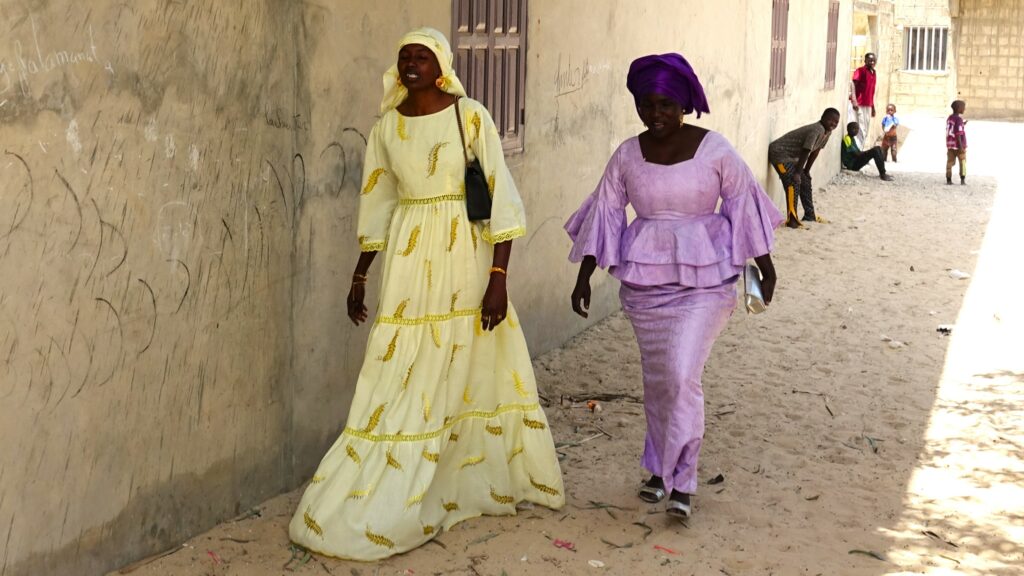
We saw some skilful lads playing football in the street. Perhaps there was a future ‘Pape Sarr’ (plays for Spurs) among them.
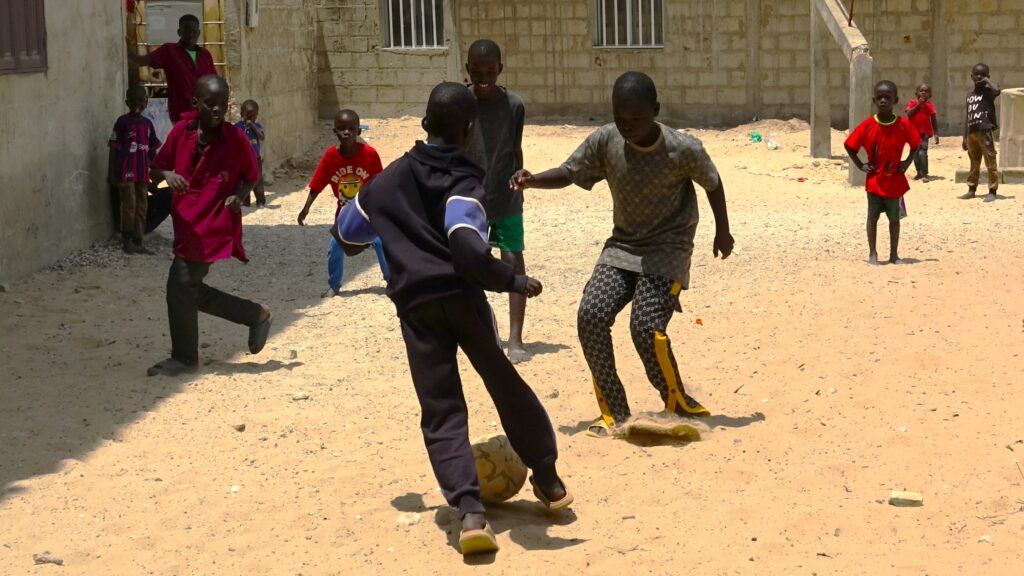
The mums were getting the food ready:
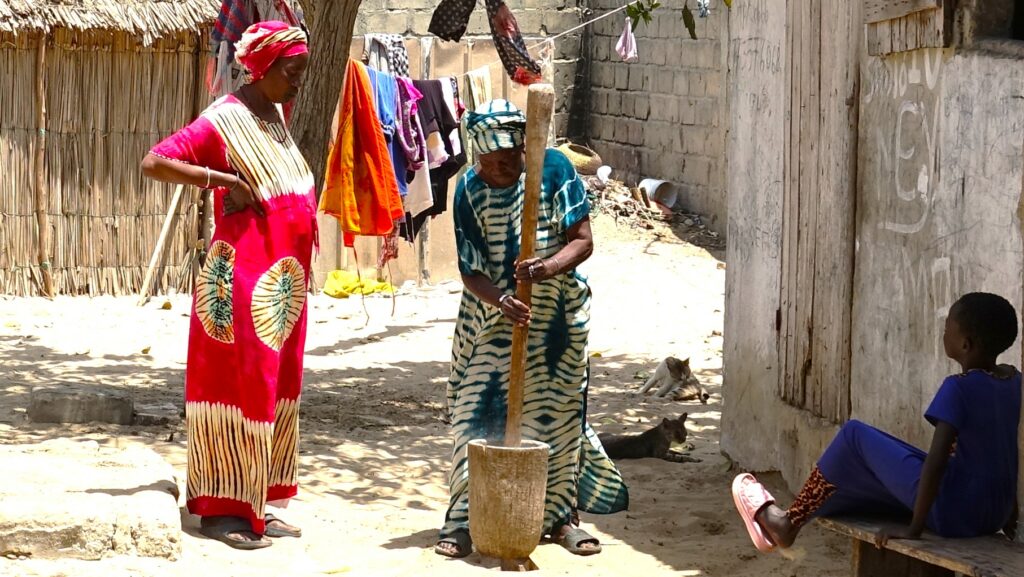
Some of the children were a little cheeky:
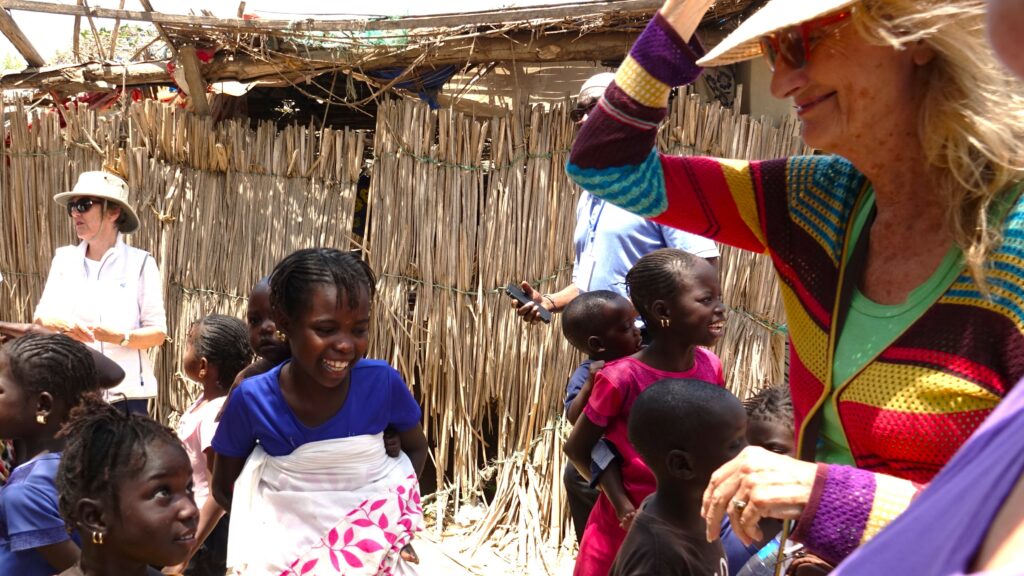
Our vehicle was ready for re-boarding.
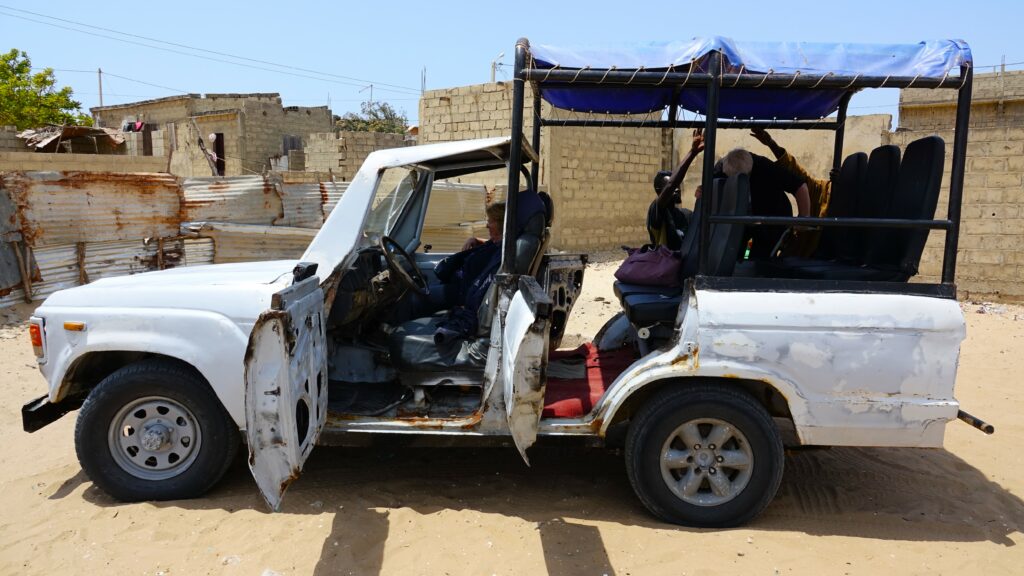
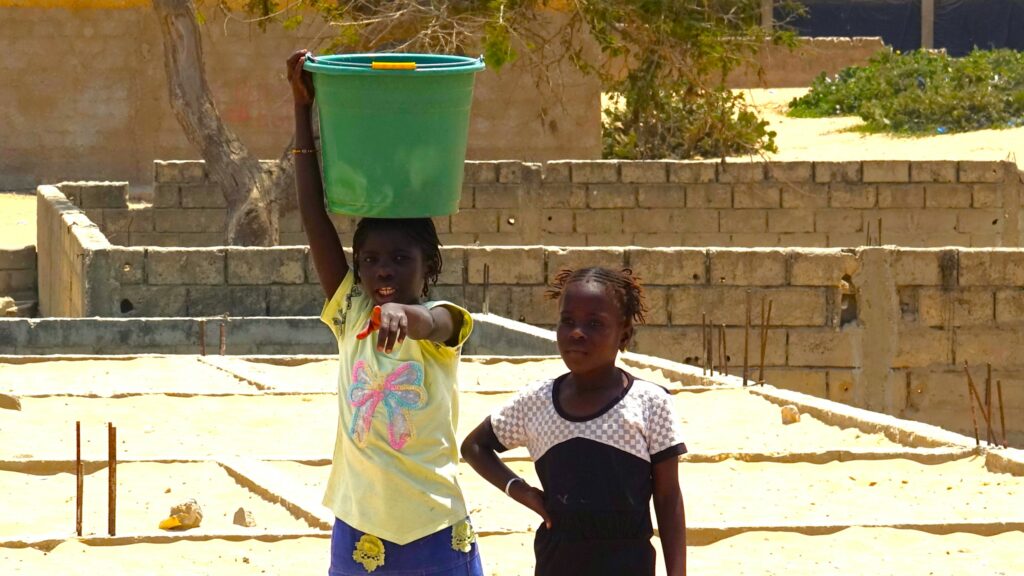
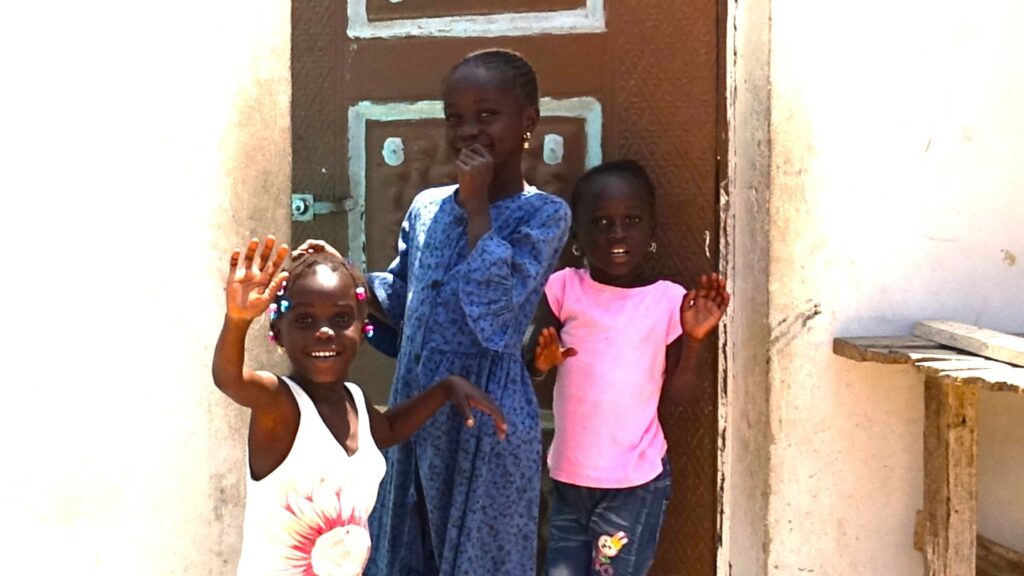
As we passed a salon and coiffure, I wondered if head-carrying influenced hairstyles?
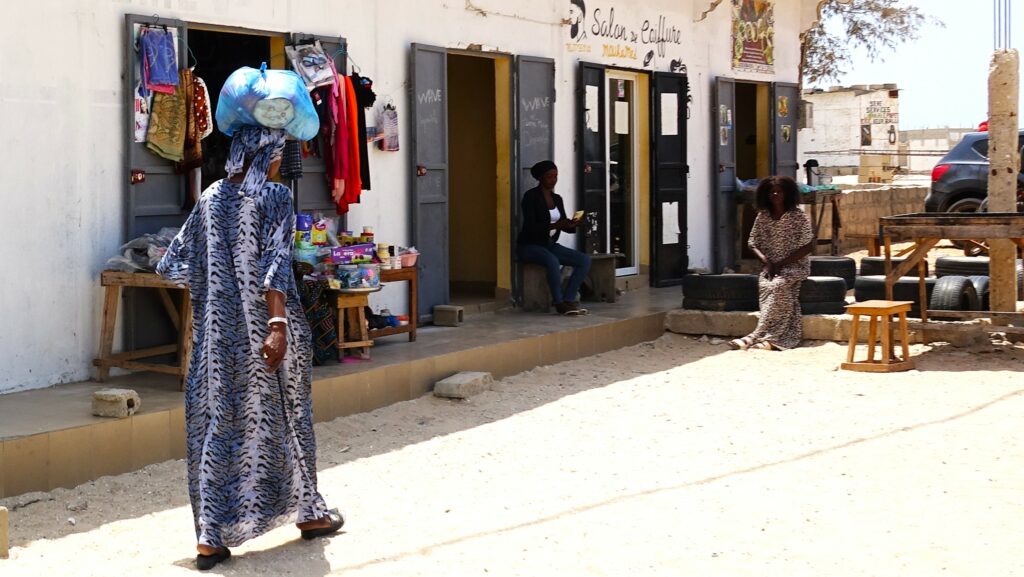
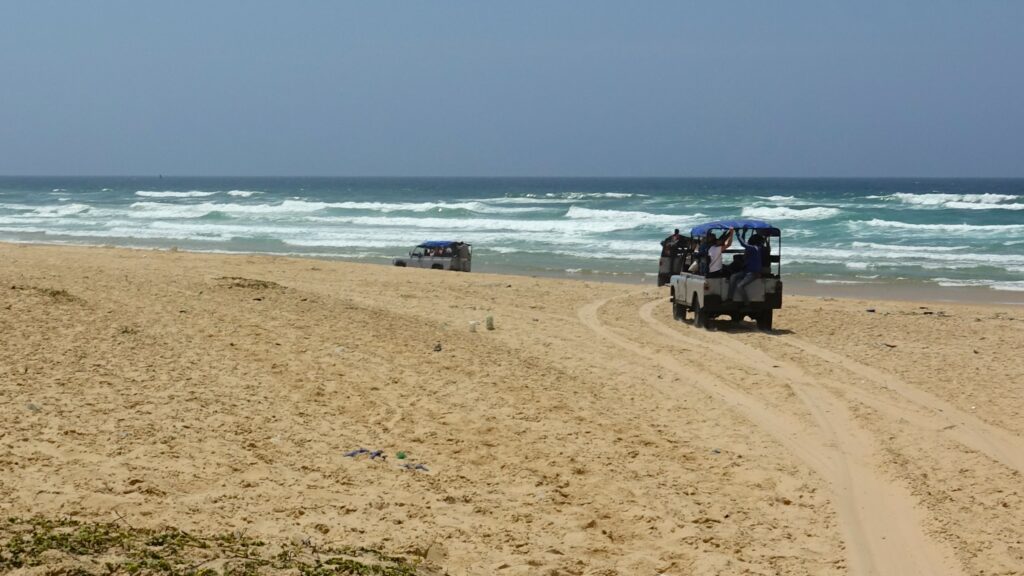
But soon we started a high speed chase along the beach.
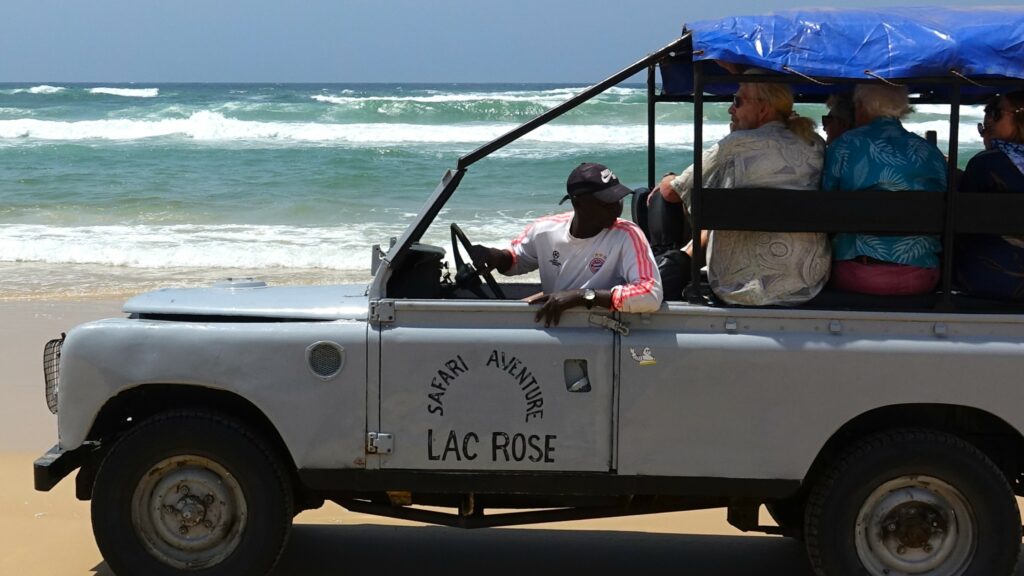
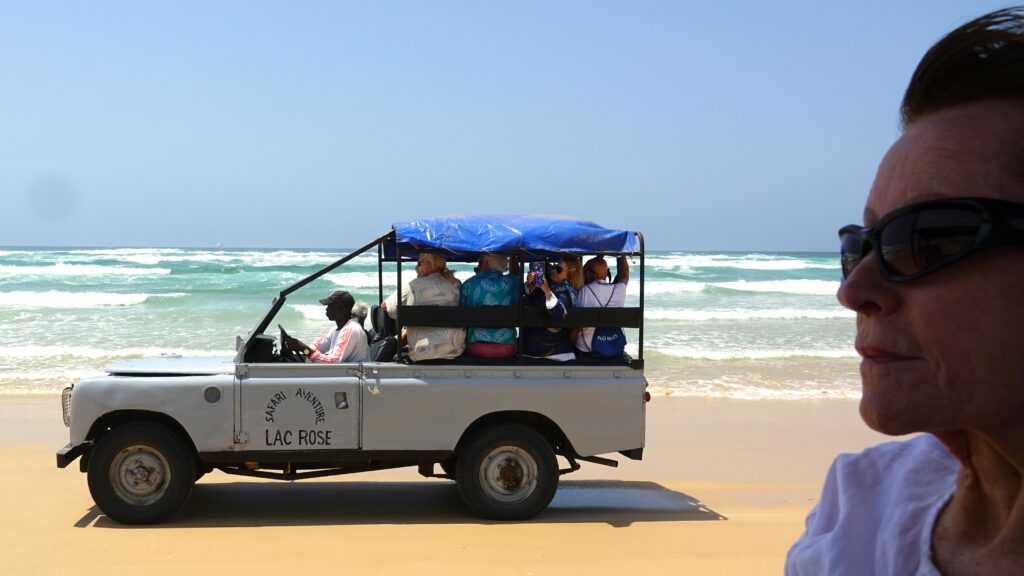
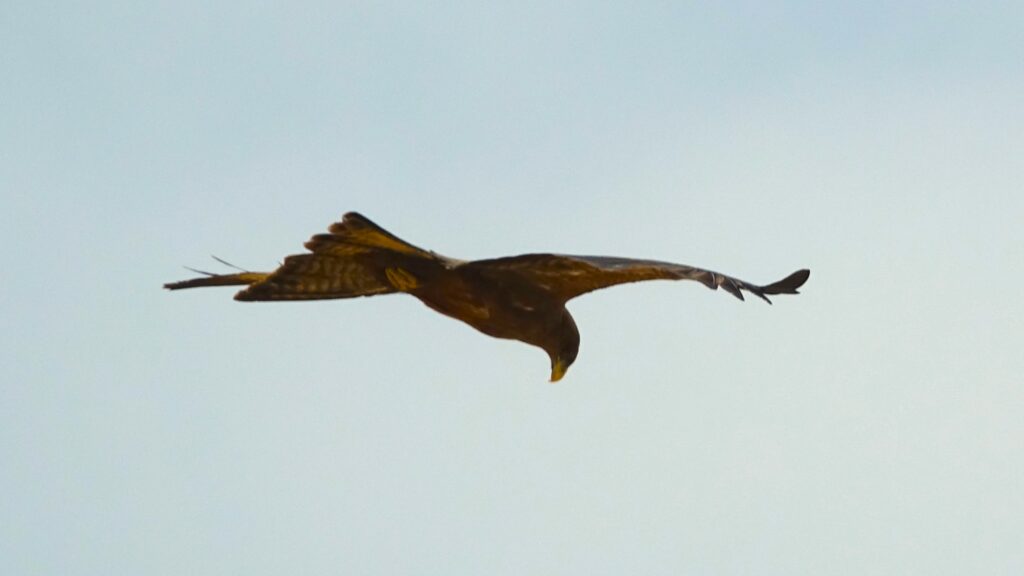
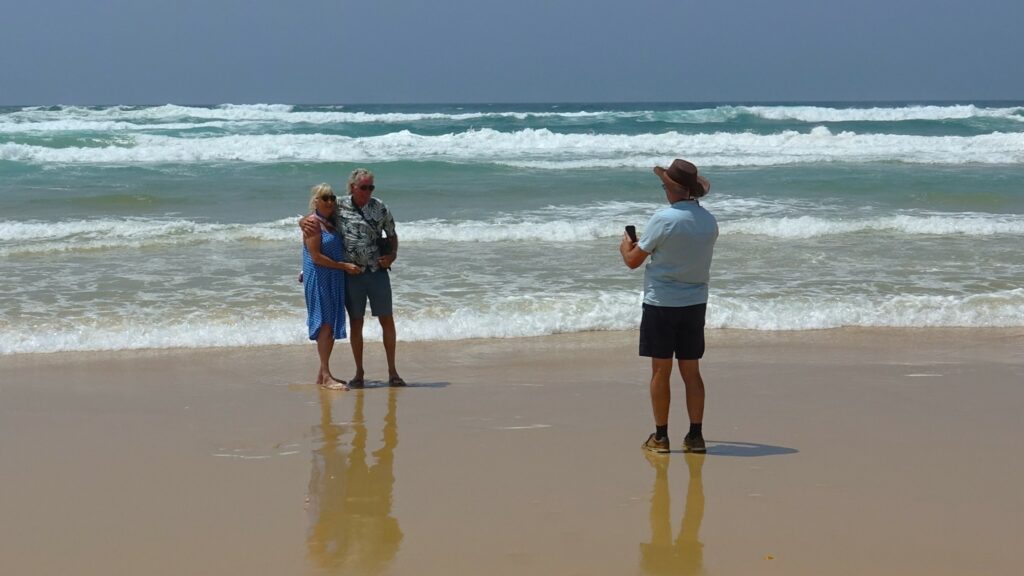
It was nearly lunch time so we headed back to the hotel.
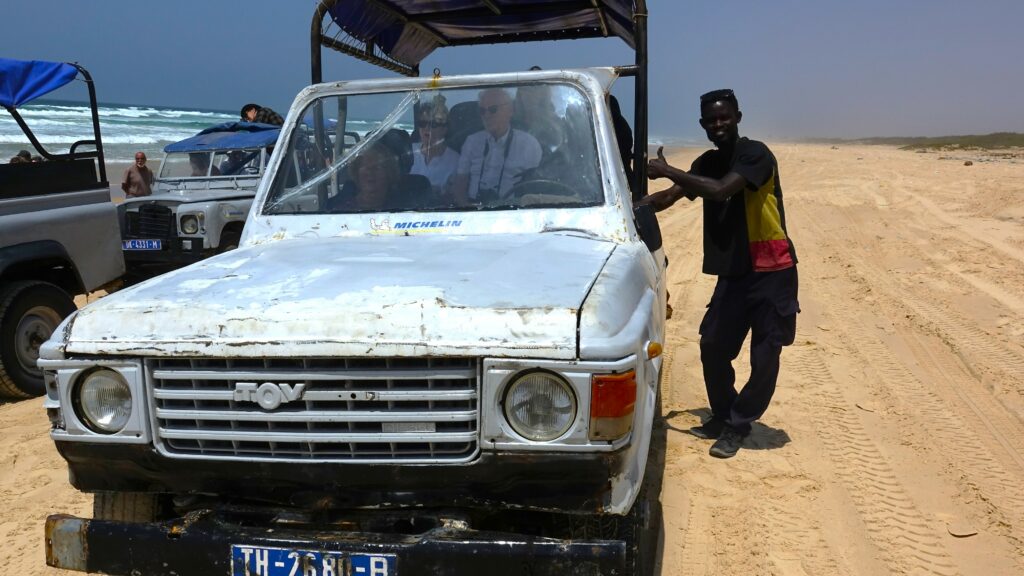
We were entertained during lunch by three musicians.
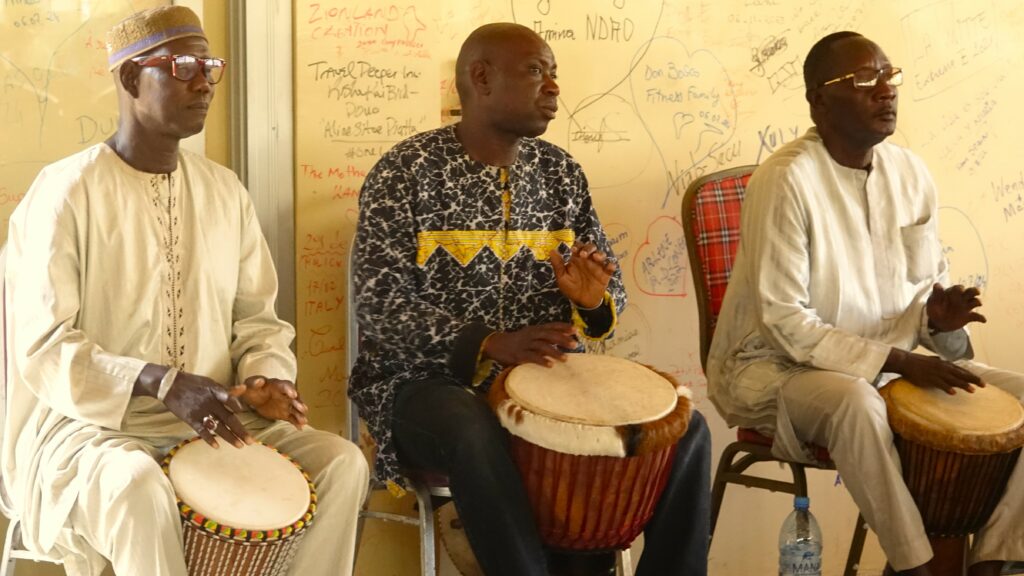
It was mostly drumming but they also played a kora, a 21 string instrument made from half a gourd and cow hide.
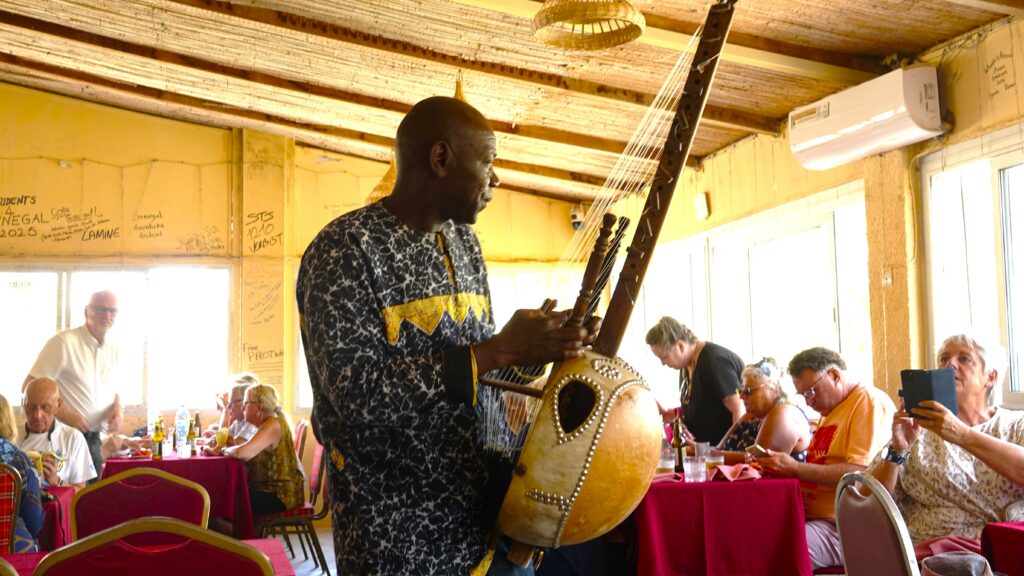
Lunch was chicken and fish with potatoes and salad. Very tasty.
Then we were on the road again, off to another village where a demonstration of tribal dancing was to take place.
At the new location, we were introduced to the chief, this time a senior lady, and then, when we were seated in a yard, the show began.
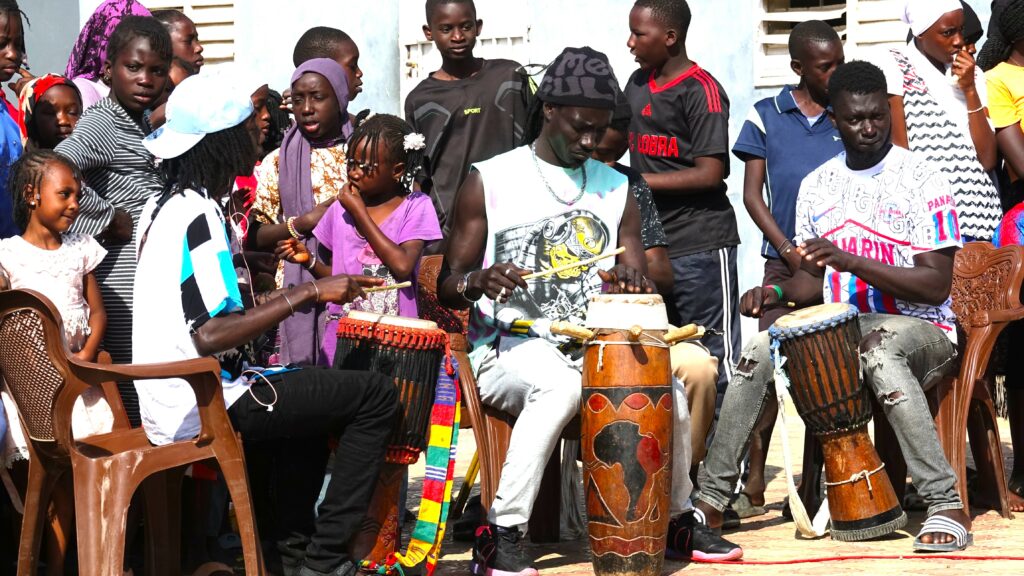
At first four men showed individual stiles. To me, this looked like frantic and random waving of arms and kicking of legs. It also involved stamping hard on the hard ground with joint-jarring force.
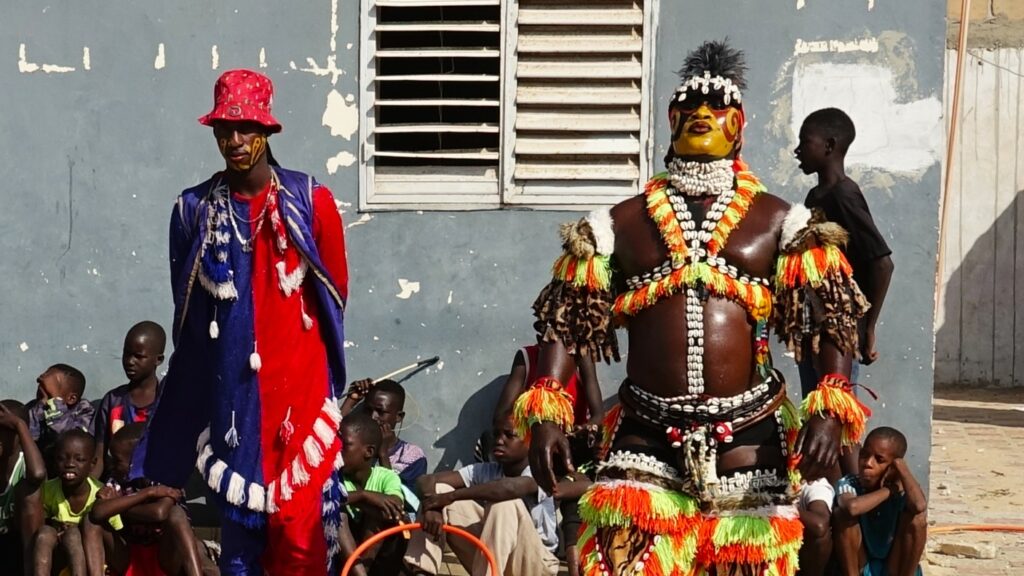
The women’s clapping added to the overall percussive effect, but they didn’t really seem impressed with the men’s display of virility. They had probably seen it all before.
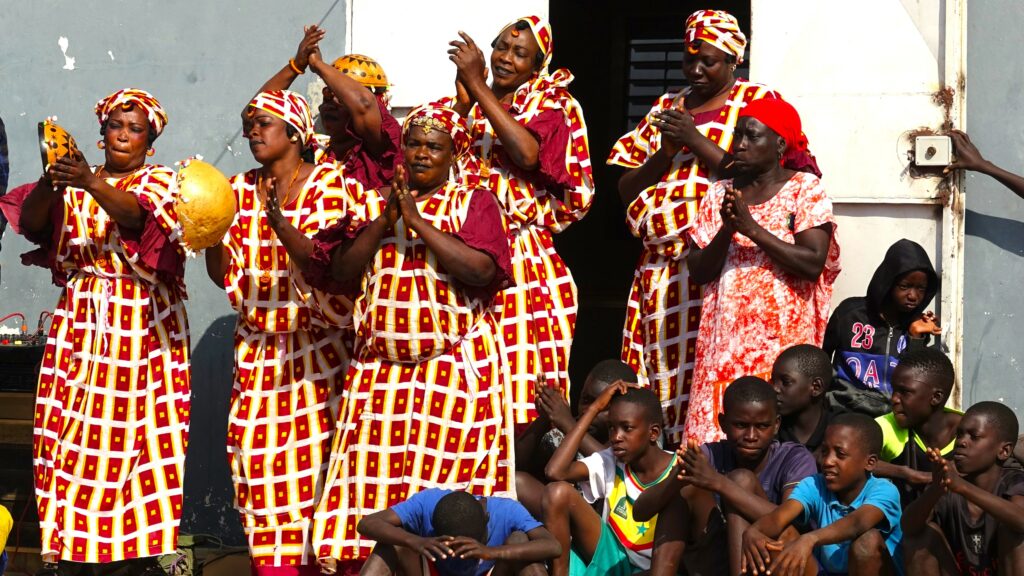
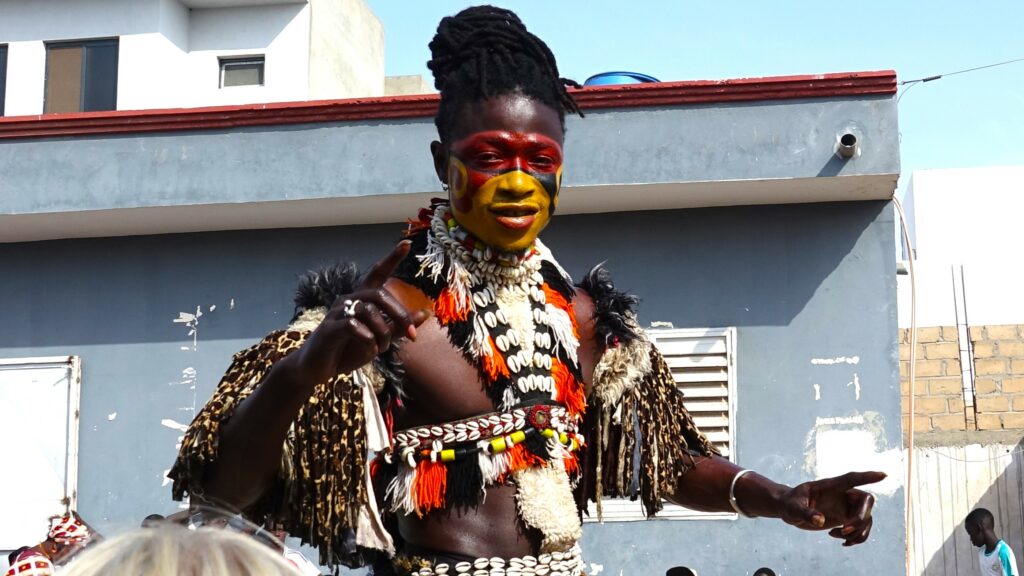
Eventually the women entered the arena and the dance transformed into a short-step shuffle with each group (i.e. the men and the women) moving in a separate line around the area.
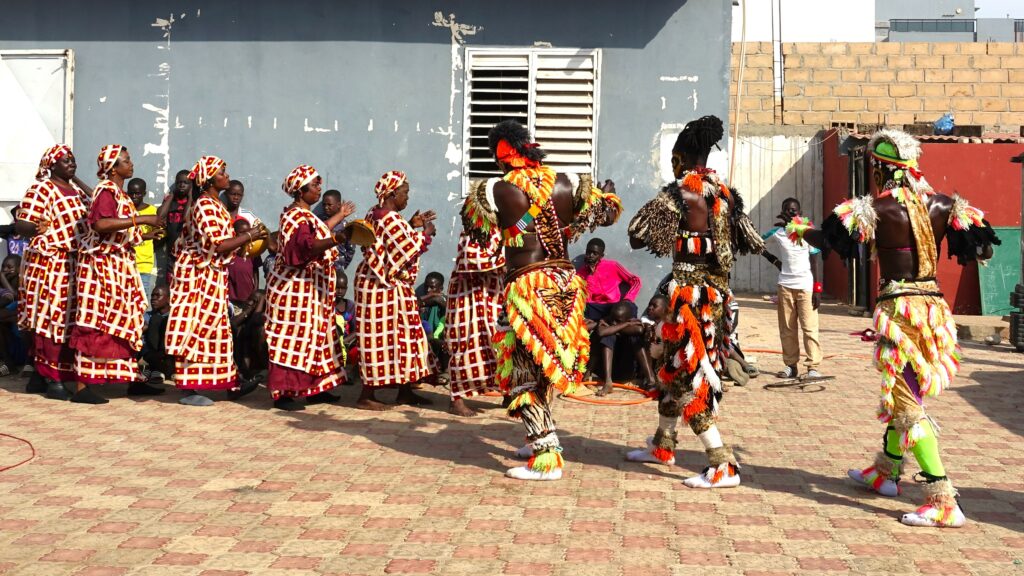
The dancing was followed by a wrestling display by two young boys. The object was to lift your opponent off the ground.


It ended with the taller of two winning but the little fellow wouldn’t give up even when he was up in the air. The ref had to prise them apart.
The trip ended with a high speed coach ride back to the ship to make it just before sailing time. We would not have made it intime through the dense traffic without our police escort, and some additional police support giving us priority on roundabouts etc.
Overall a fascinating and enjoyable day.
Just two more ports to go now, La Palma in the Canaries, and Madeira.
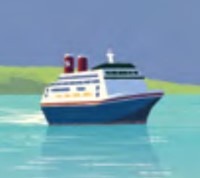
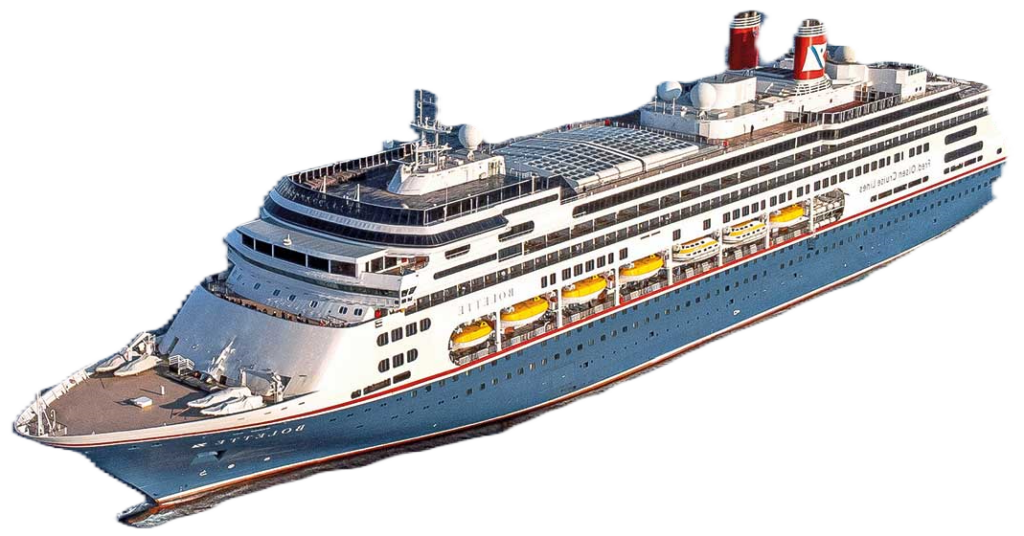
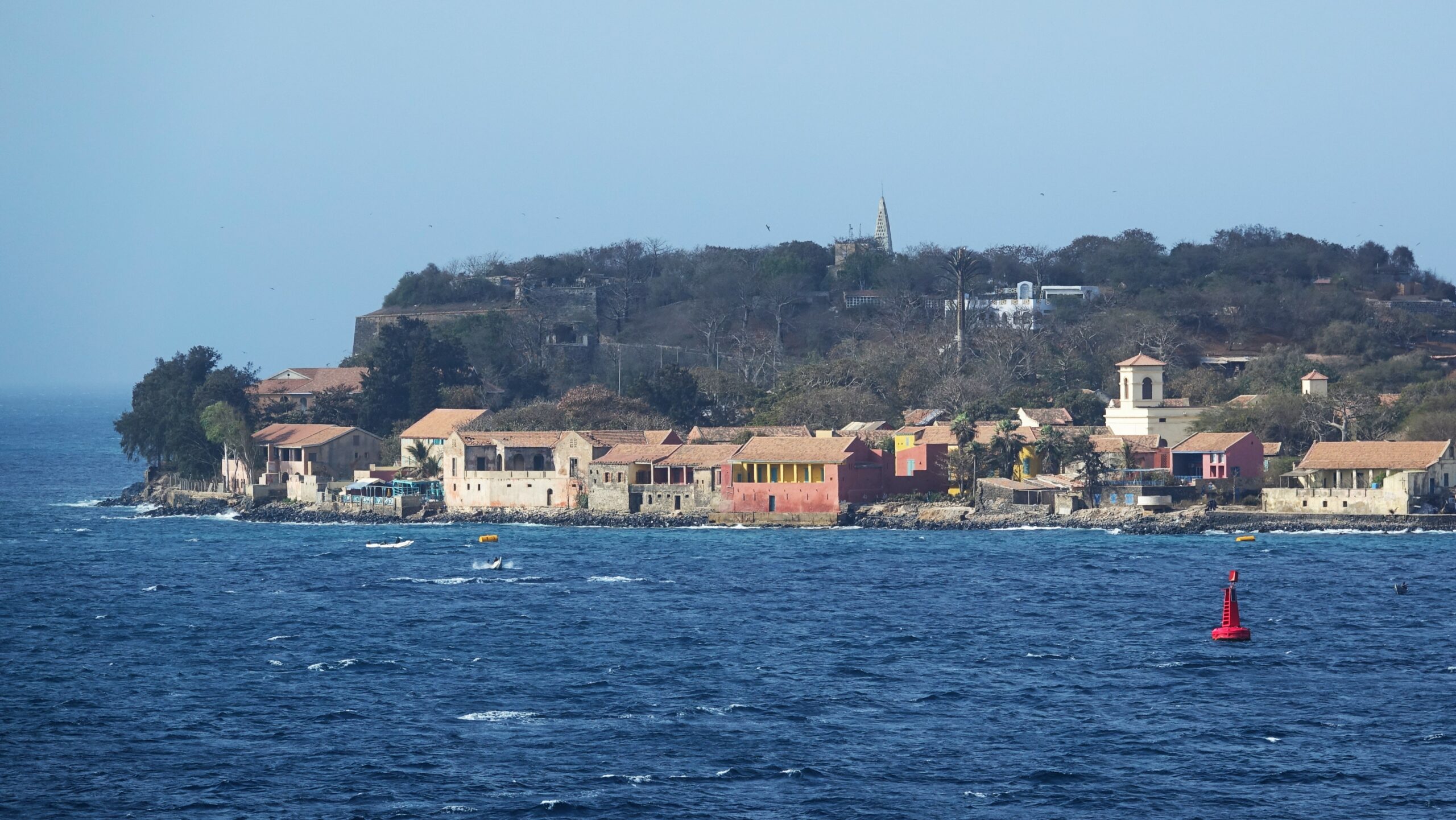
Leave a Reply